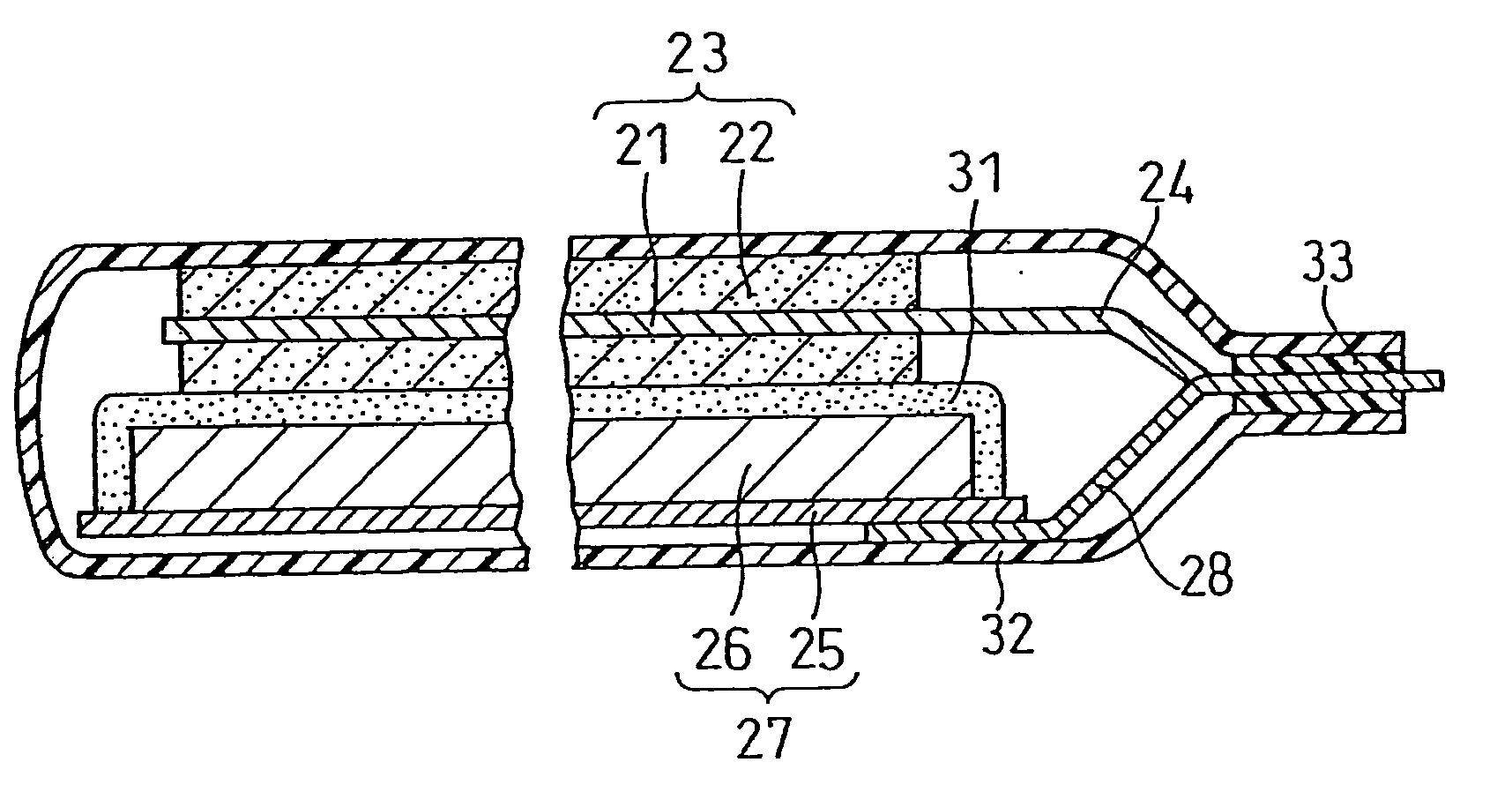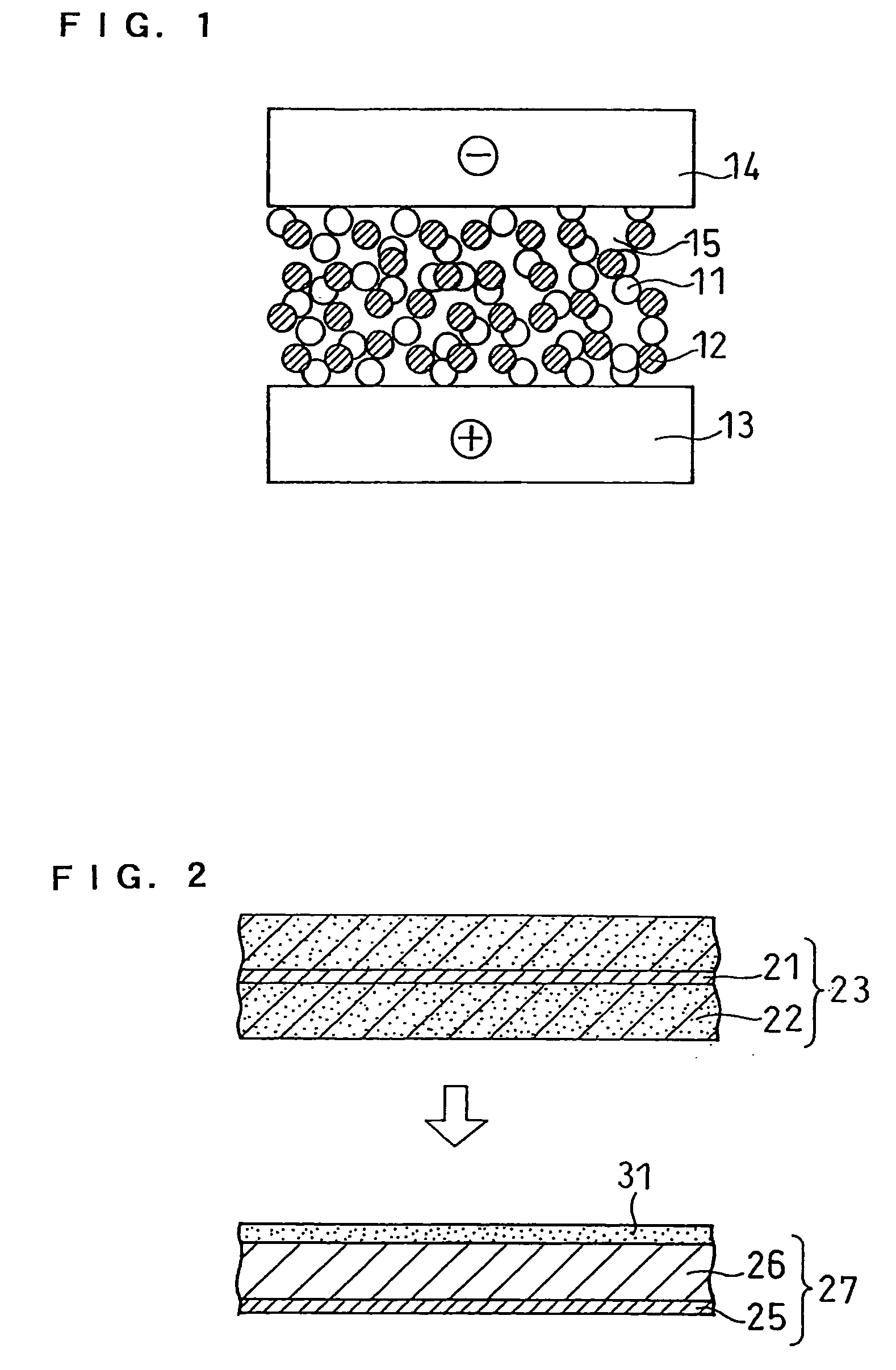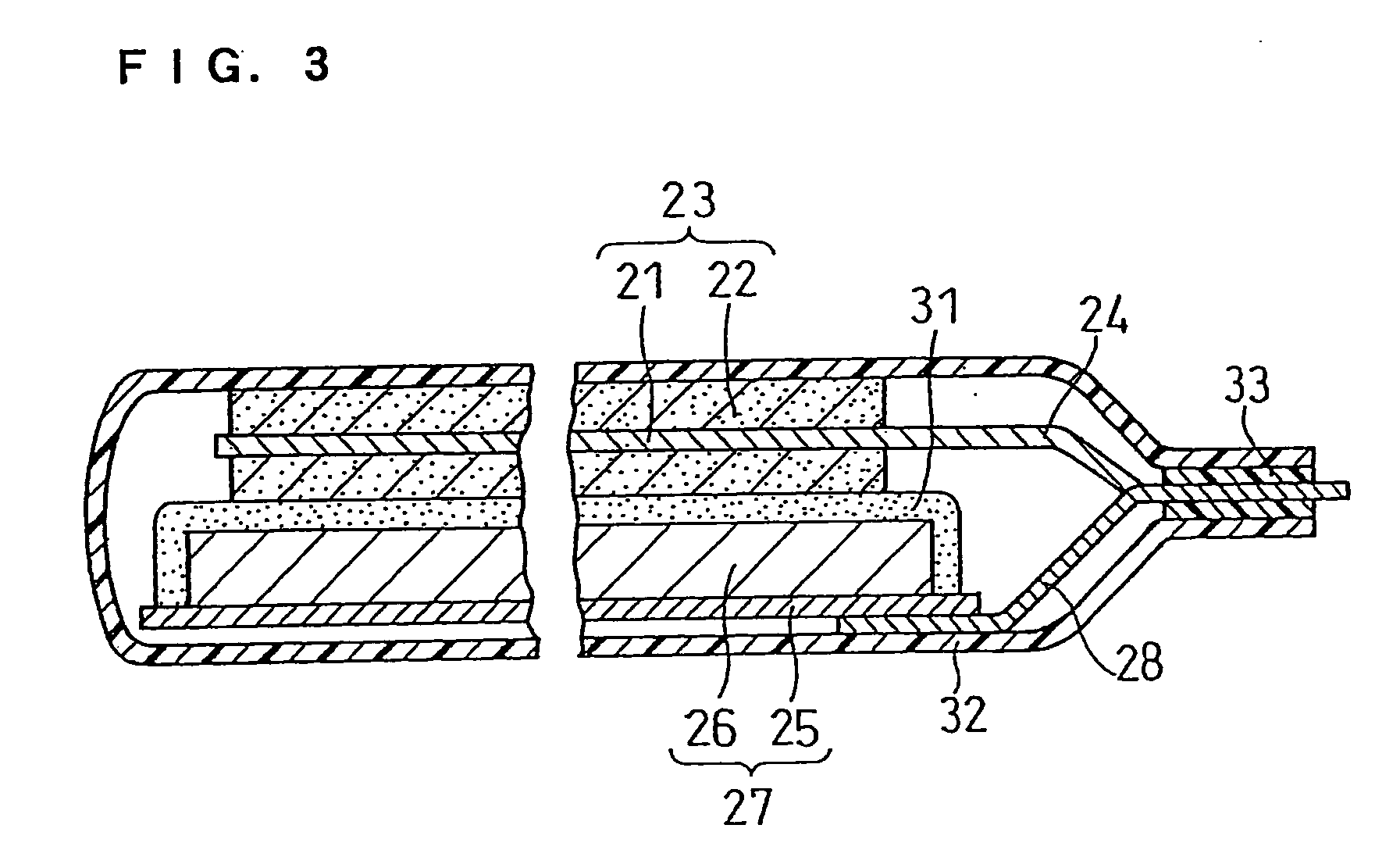Lithium ion secondary battery
a secondary battery and lithium ion technology, applied in the direction of cell components, final product manufacturing, sustainable manufacturing/processing, etc., can solve the problems of short-circuit failure, limitation of elongation percentage, and inability to improve the maximum lithium ion conductivity, etc., to achieve safety and high-rate characteristics, good discharge characteristics, and good heat resistance.
- Summary
- Abstract
- Description
- Claims
- Application Information
AI Technical Summary
Benefits of technology
Problems solved by technology
Method used
Image
Examples
example 1
[0120]FIG. 2 and FIG. 3 are referred in the explanation.
(i) Fabrication of Positive Electrode
[0121] To 100 parts by weight of LiCoO2, 4 parts by weight of polyvinylidene fluoride (PVDF) as a binder and 3 parts by weight of acetylene black as a conductive agent were added and subsequently an appropriate amount of NMP (N-methyl-2-pyrrolidone) was added and then kneaded, to prepare a positive electrode material mixture paste.
[0122] The obtained positive electrode material mixture paste was applied on both sides of an aluminum foil core material 21 with a thickness of 20 μm, and then rolled so that the density of the active material (density of LiCoO2) in the positive electrode material mixture 22 became 3.3 g / ml, to produce a positive electrode 23. A positive electrode lead 24 made of aluminum was connected to the positive electrode 23.
(ii) Fabrication of Negative Electrode
[0123] To 100 parts by weight of spherical artificial graphite, 1 part by weight of styrene-methacrylic aci...
example 2
(i) Fabrication of Positive Electrode and Negative Electrode
[0150] A positive electrode and a negative electrode were fabricated in the same manner as Example 1.
(ii) Formation of Porous Film
[0151] A raw material paste of porous film was prepared in the same manner as Example 1. Herein, each raw material paste of porous film was prepared by dispersing a filler and a resin binder in NMP with the ratio shown in Table 3 and kneading them. The raw material content in the paste (a total of the filler and the resin binder) was set as 50 wt % in any of the cases. For the filler, an alumina (Al2O3) with an average particle size of 0.4 μm was used alone.
TABLE 3Amount of resinAverage porebinder per 100 partsAveragesize ofby weight of fillerparticlemicropore inHigh rate(parts by weight)size of fillerporous filmPeeling ofcharacteristicExampleBM500BPVDF(μm)(μm)porous film(%)A20.750.750.40.05NONE87.6Com. 1b0.50.50.40.05EXIST—B2330.40.05NONE84.1C2440.40.05NONE80.9Com. 2b550.40.05NONE76.5Com....
example 3
(i) Fabrication of Positive Electrode
[0167] A positive electrode was fabricated in the same manner as Example 1 except that the size of the electrode plate was changed to a predetermined size.
(ii) Fabrication of Negative Electrode
[0168] A negative electrode was made in the same manner as Example 1 except that the negative electrode material mixture was carried on both surfaces of the copper foil core material to give a density of 1.4 g / ml of the active material (density of graphite), and that the size of the electrode plate was changed to a predetermined size.
(iii) Formation of Porous Film
[0169] A filler and a resin binder were dispersed in NMP in proportions shown in Table 4, and then kneaded, to prepare a raw material paste of porous film. The raw material content in the paste (the total of the filler and the resin binder) was set as 50 wt % in any of the cases.
[0170] As in Example 1, for the filler, the “alumina a” with an average particle size of 0.4 μm was used alone, ...
PUM
| Property | Measurement | Unit |
|---|---|---|
| Temperature | aaaaa | aaaaa |
| Temperature | aaaaa | aaaaa |
| Temperature | aaaaa | aaaaa |
Abstract
Description
Claims
Application Information
 Login to View More
Login to View More - R&D
- Intellectual Property
- Life Sciences
- Materials
- Tech Scout
- Unparalleled Data Quality
- Higher Quality Content
- 60% Fewer Hallucinations
Browse by: Latest US Patents, China's latest patents, Technical Efficacy Thesaurus, Application Domain, Technology Topic, Popular Technical Reports.
© 2025 PatSnap. All rights reserved.Legal|Privacy policy|Modern Slavery Act Transparency Statement|Sitemap|About US| Contact US: help@patsnap.com



